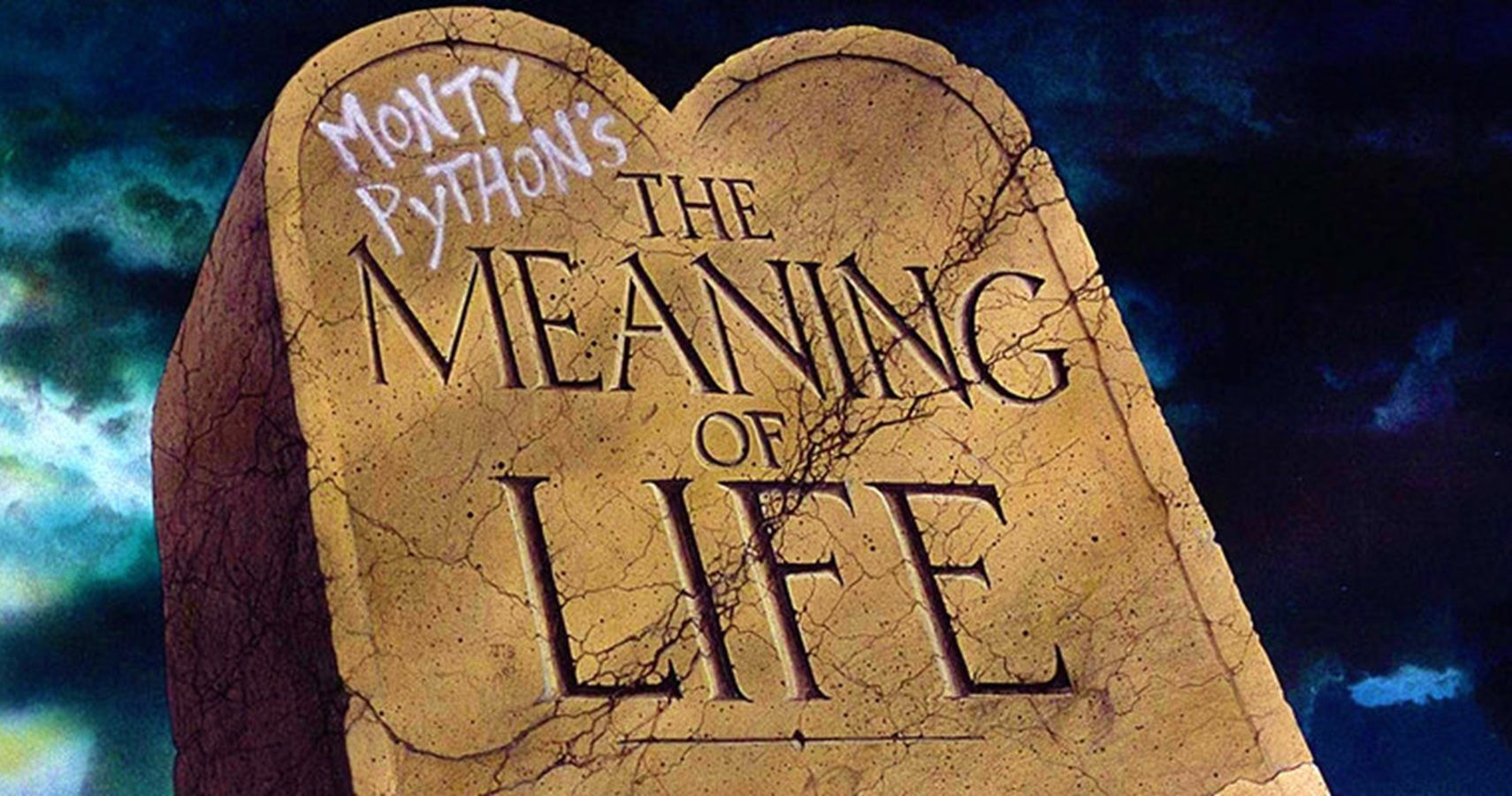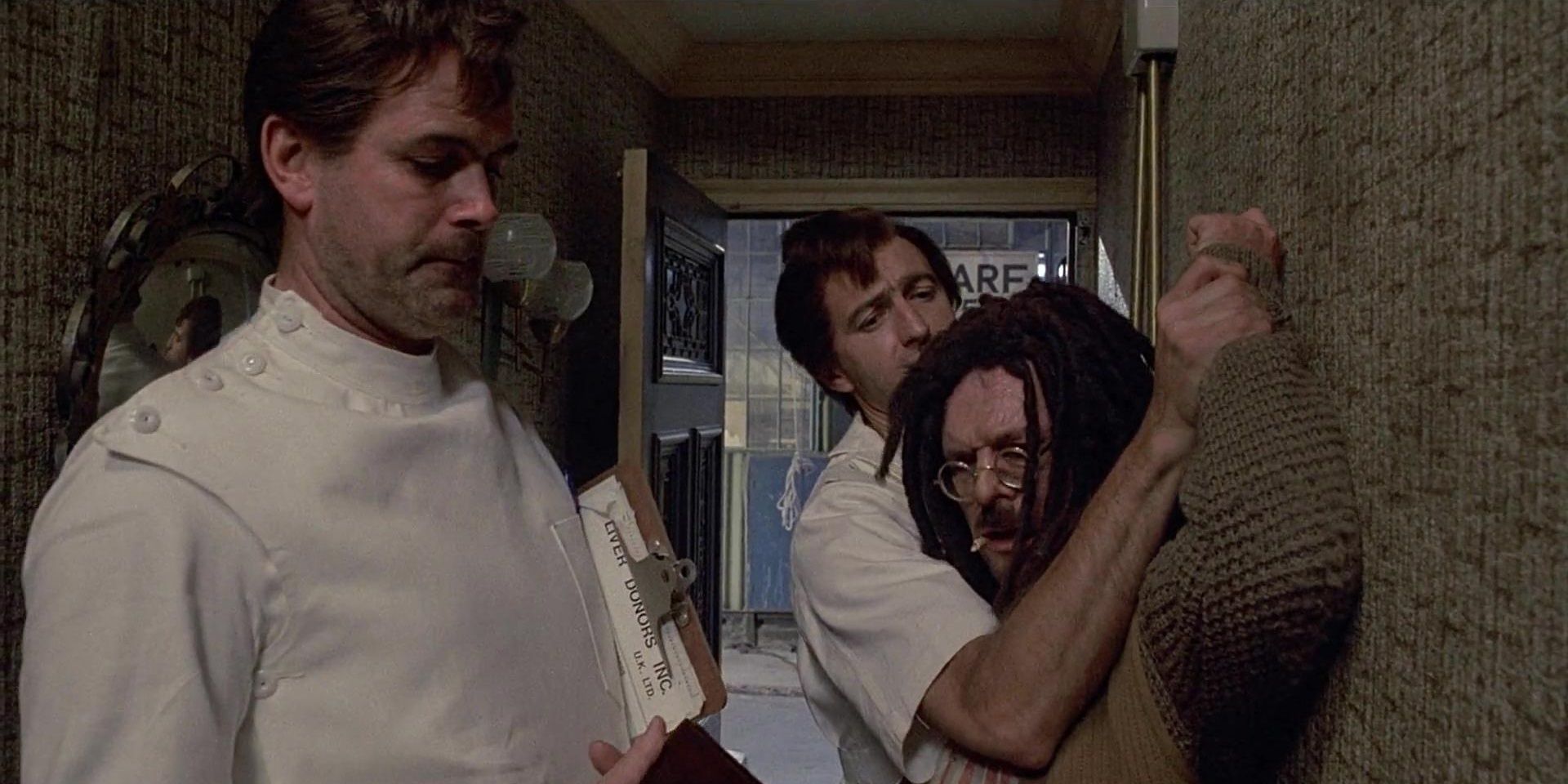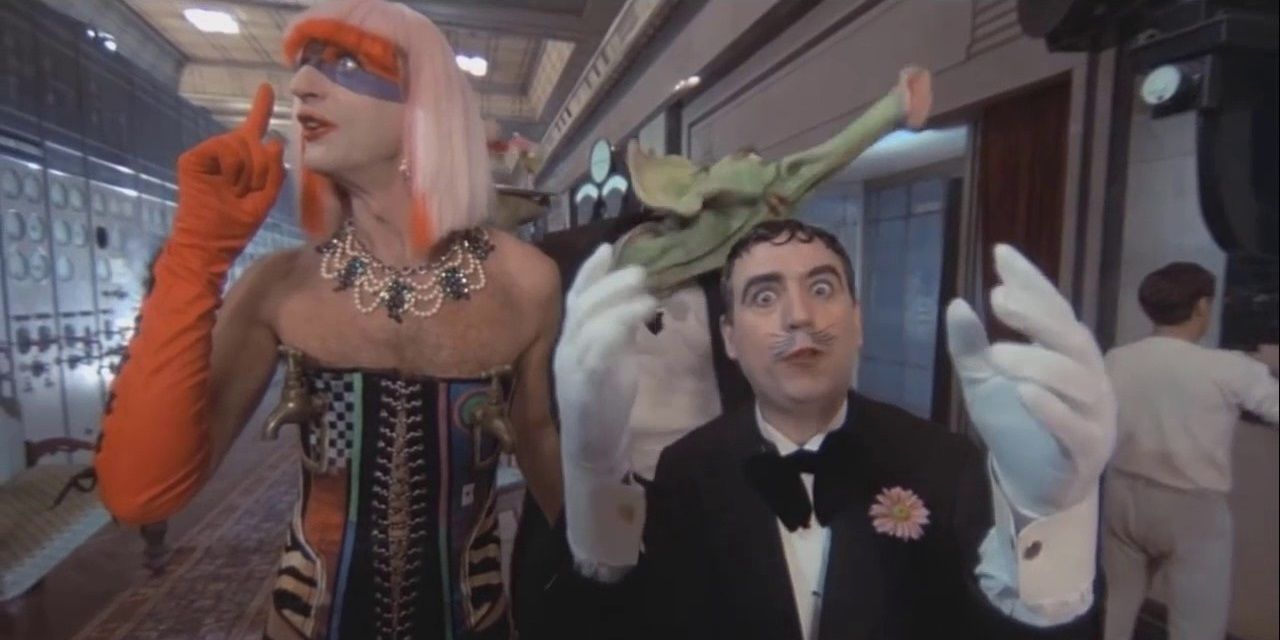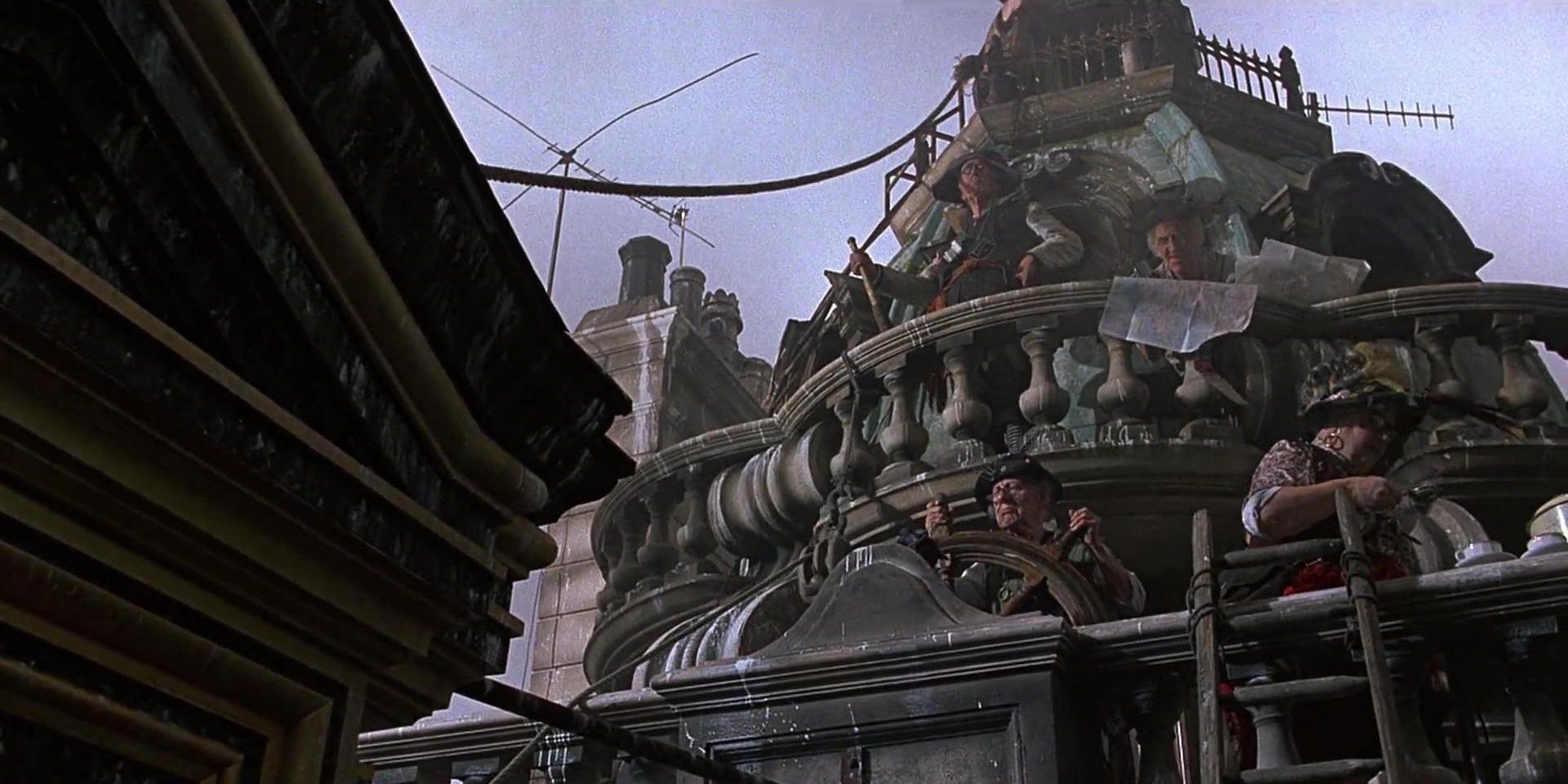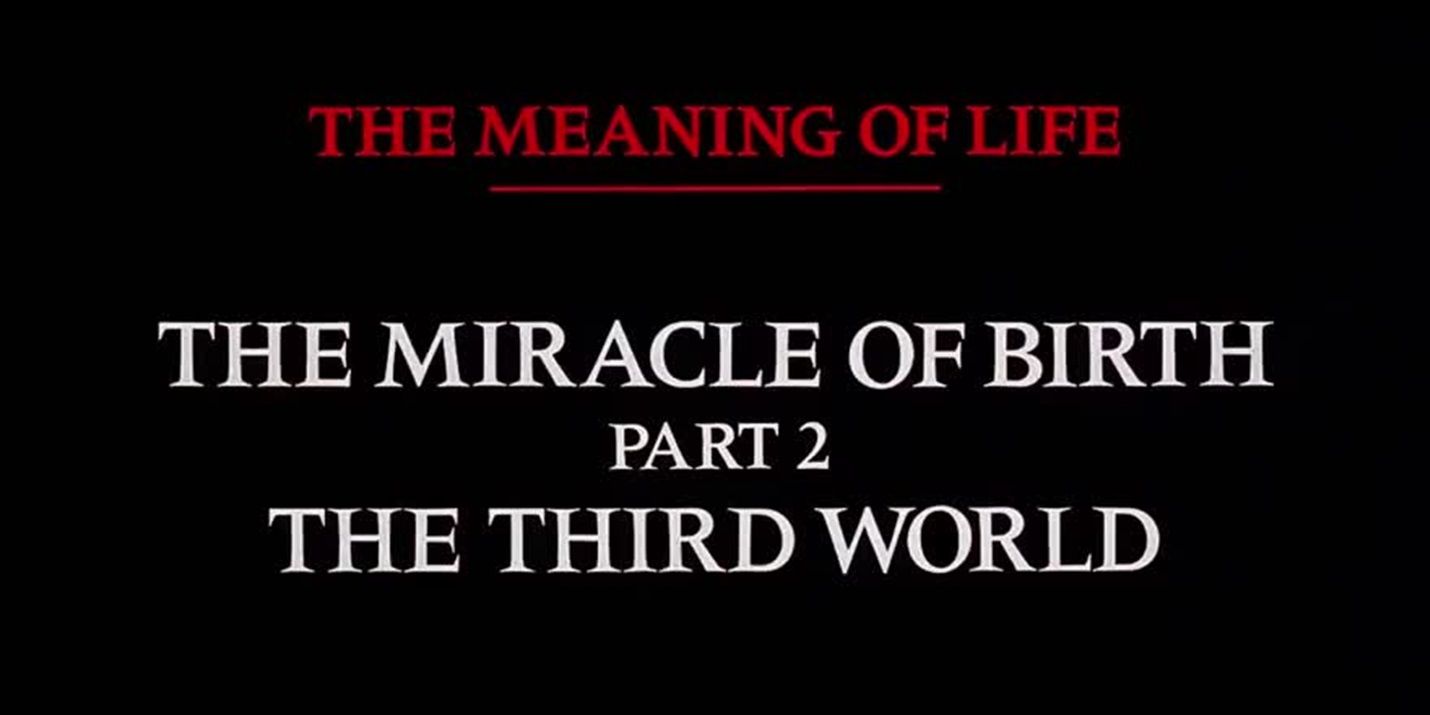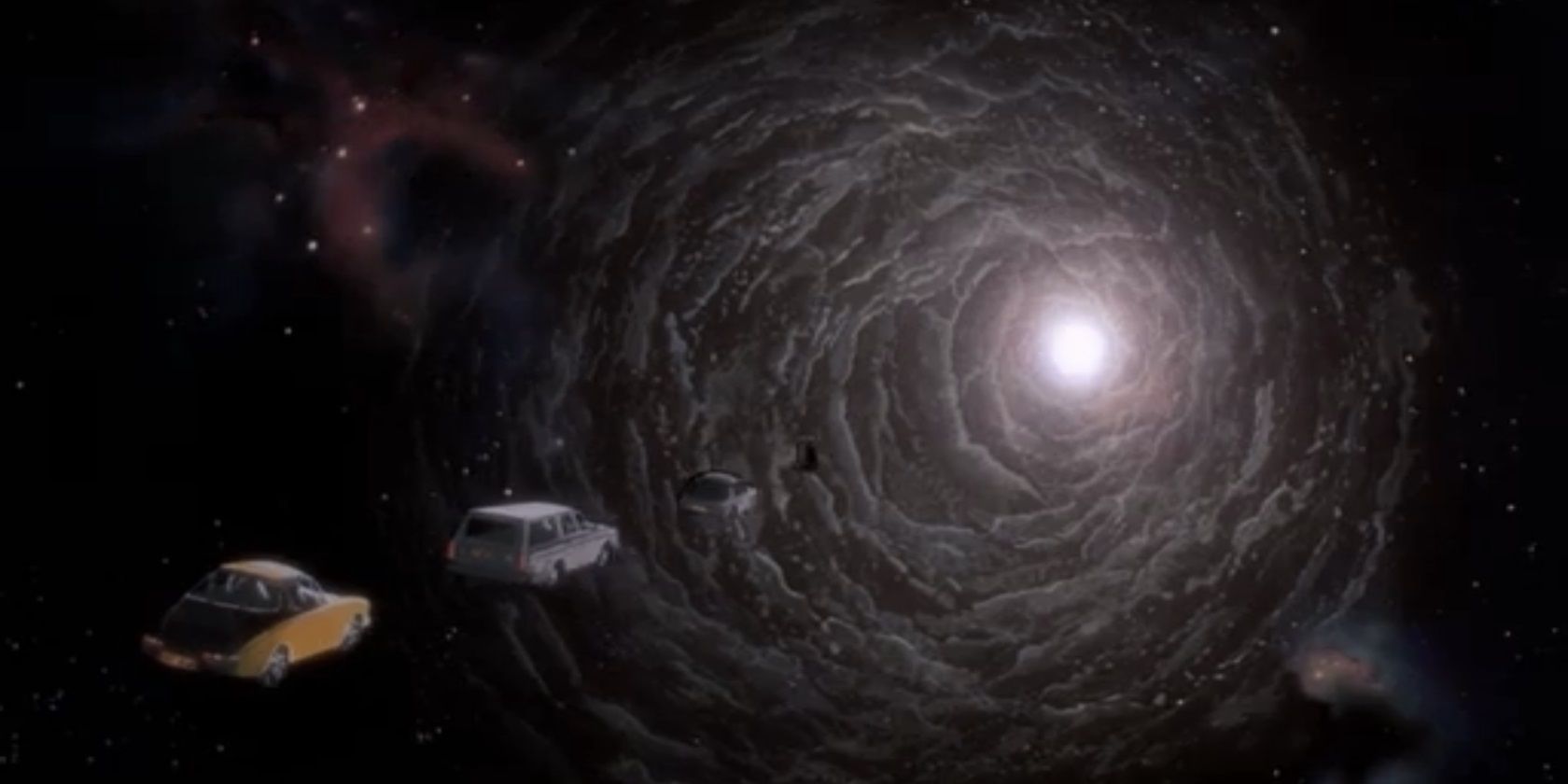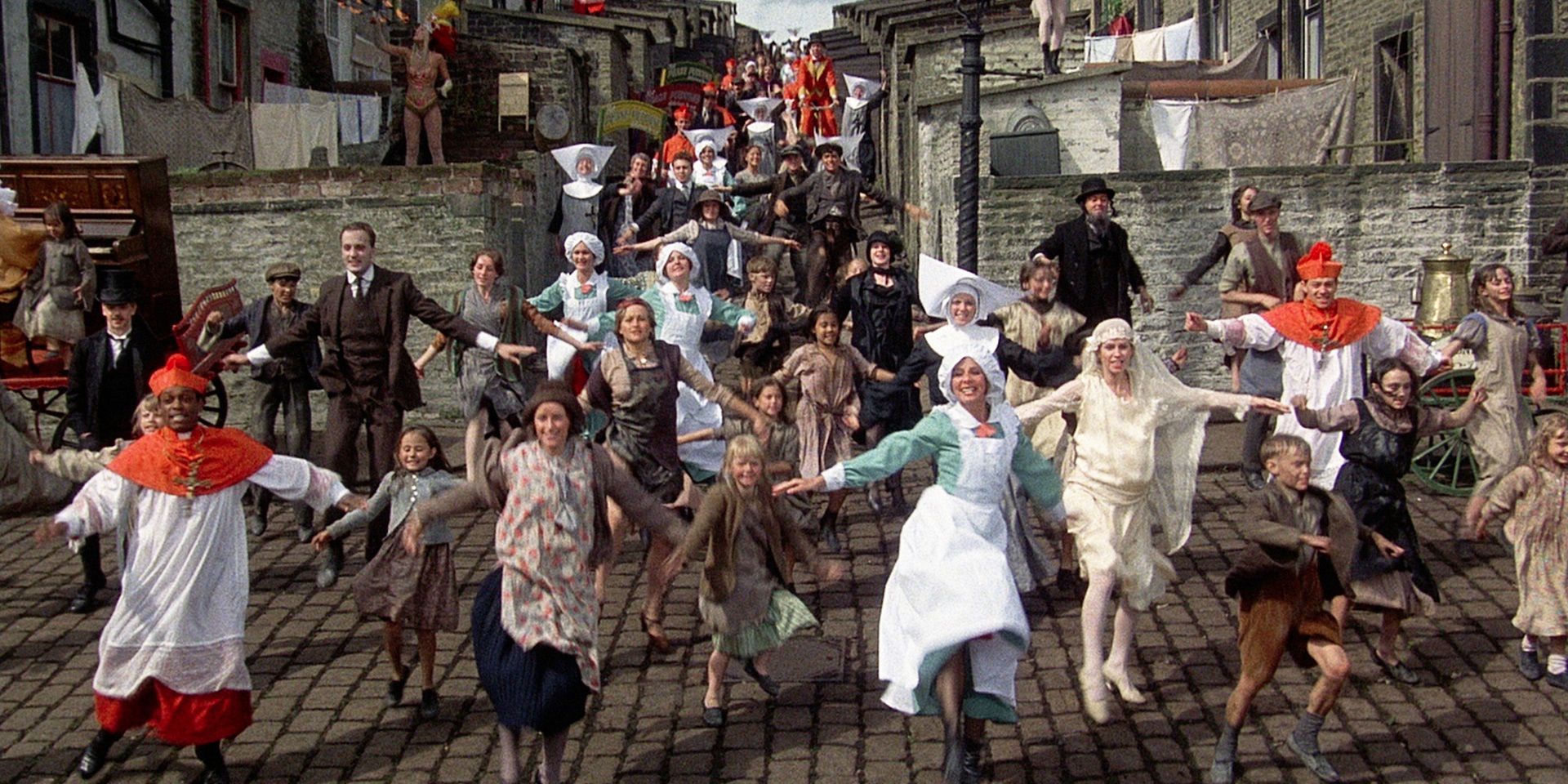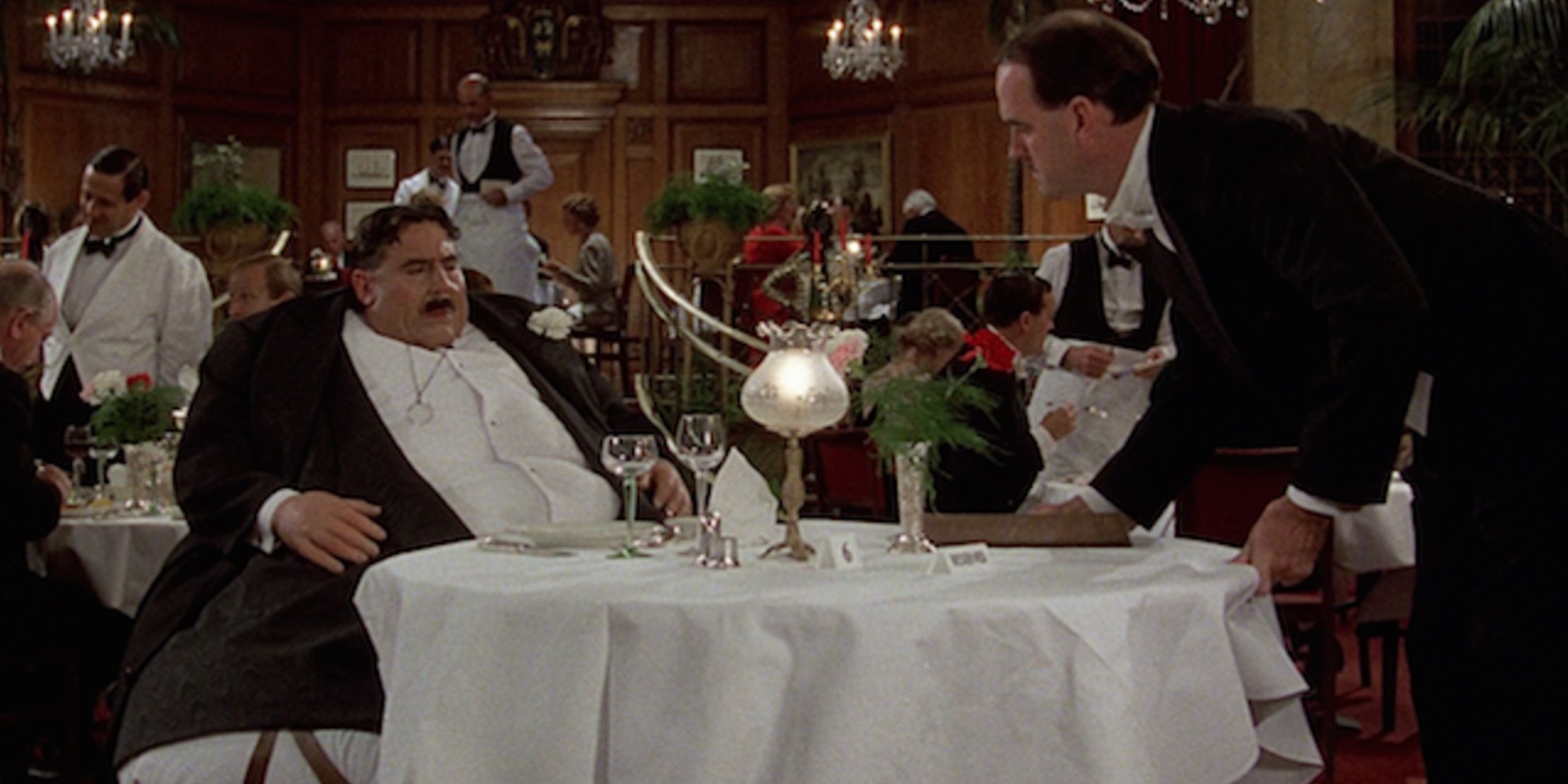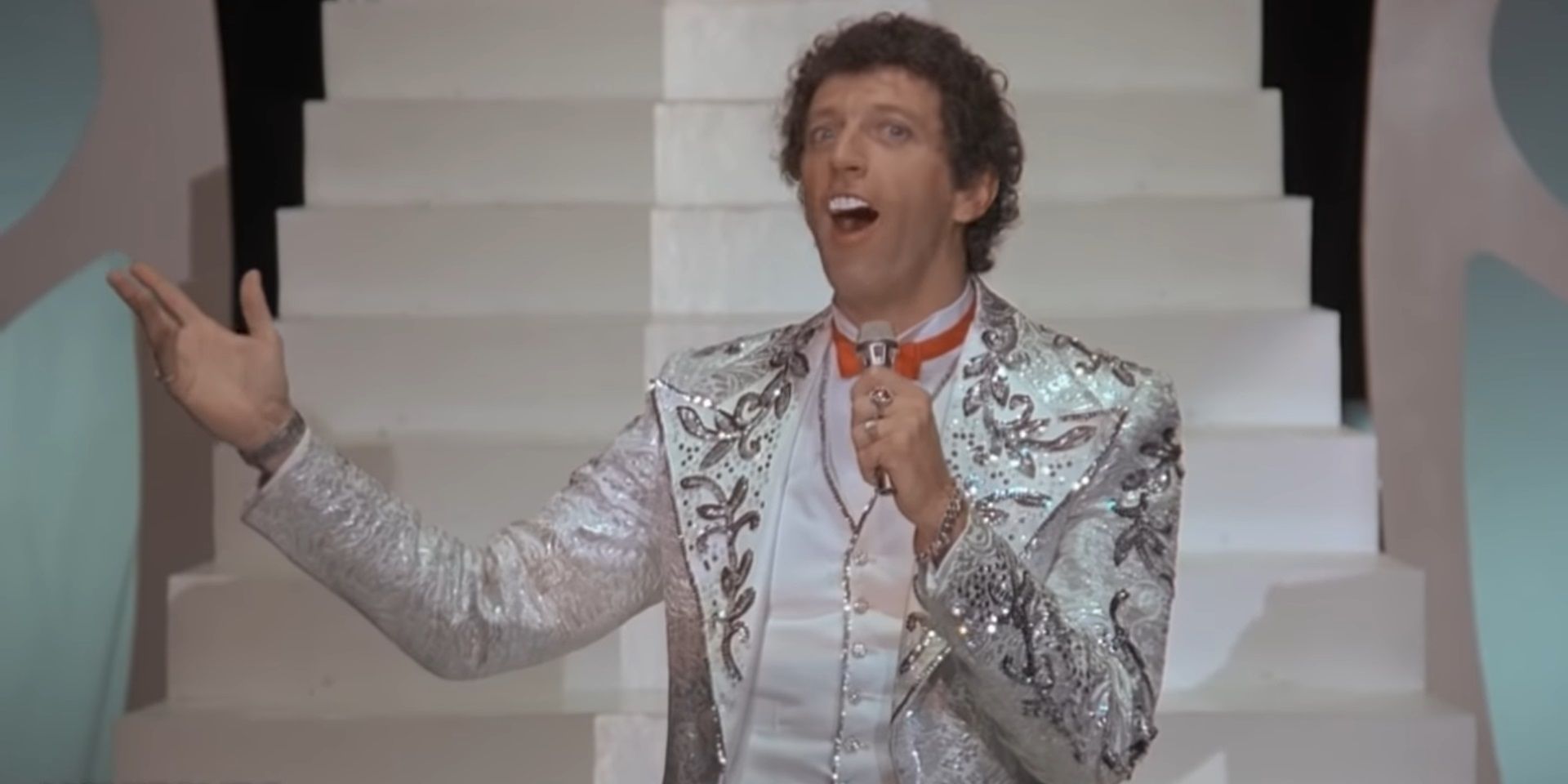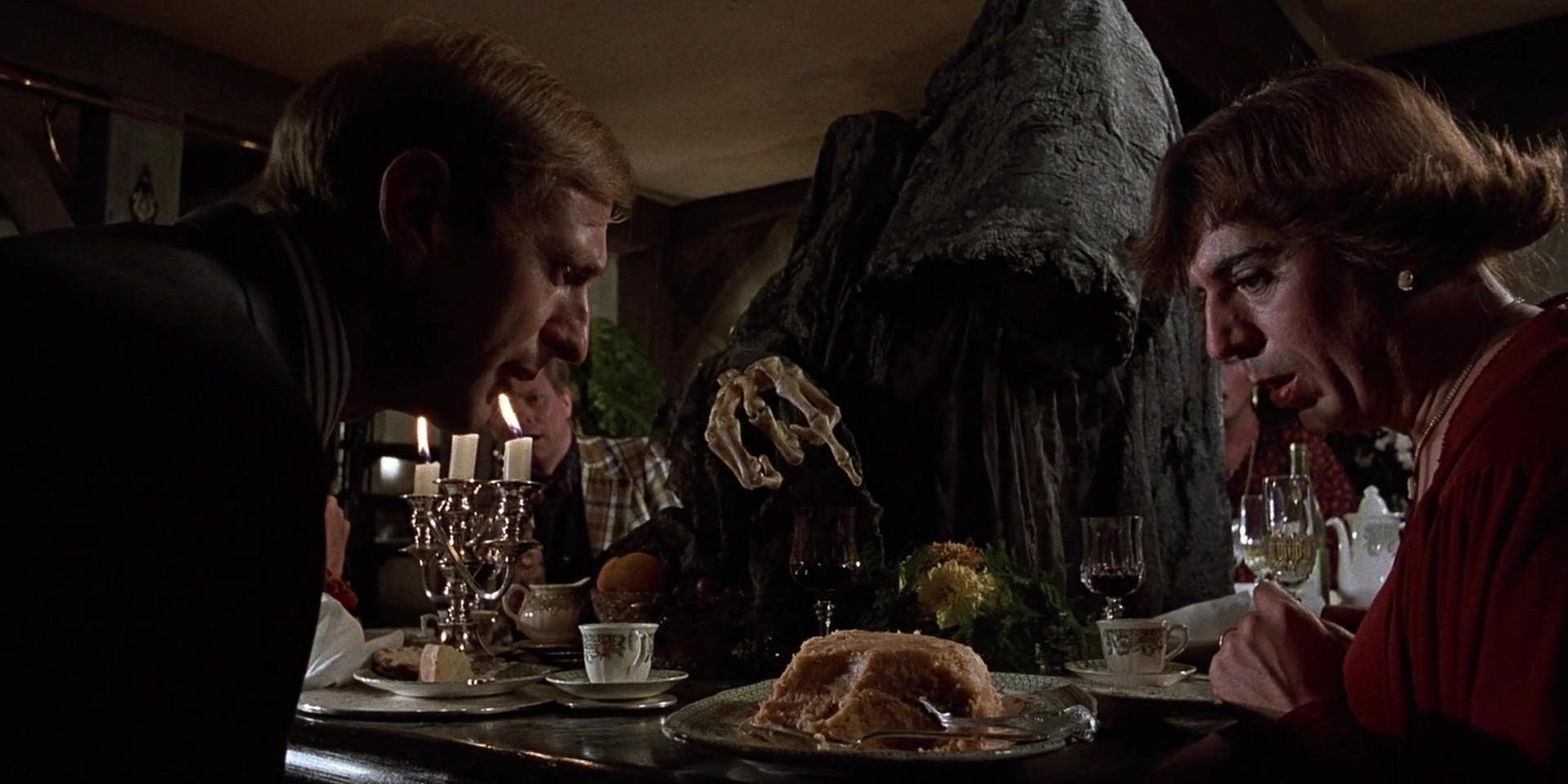In discussions of Monty Python’s movies, four usually get boiled down to two. And Now for Something Completely Different is usually disregarded, because it’s just a collection of sketches from the troupe’s TV series, while Monty Python’s The Meaning of Life is considered to be a weak, hit-and-miss effort.
Monty Python and the Holy Grail and Monty Python’s Life of Brian rank among the greatest comedies ever made and exemplify the Pythons’ unique comic sensibility more perfectly than perhaps any other Python media. But The Meaning of Life is a lot funnier, smarter, and more original than it’s given credit for.
It Has Some Of The Pythons’ Darkest Humor
The Monty Python comic style is marked by absurdist and surreal humor, but the Pythons occasionally showed glimmers of a dark side. The Meaning of Life has the group’s highest quotient of pitch-black humor, and it’s glorious.
From a themed restaurant built around medieval torture to a pair of door-to-door paramedics cutting out organs from still-alive organ donors to a visit from the Grim Reaper, the Pythons revel in delightfully dark comedy in The Meaning of Life.
It’s Wildly Unpredictable
When the Pythons first came together after working on various other sketch shows and made their own, what set it apart was the wildly unpredictable tangents that each episode would go on. This spirit is kept very much alive in The Meaning of Life. After opening with a short film, the movie begins to delve into the stages of life.
Sketches jump all over the timeline of human history with varying comedic styles, and then halfway through the movie, viewers are whisked away to a surreal audience-participation sketch called “Find the Fish” that has nothing to do with anything.
The Crimson Permanent Assurance Hilariously Spoofs Pirate Movies
Back in the day, a feature presentation at a movie theater would be preceded by a full-length B-movie. Then, between getting rid of the B-movie and showing only the main feature, a short would appear before the feature.
This was paid homage in The Meaning of Life, which opens with the Terry Gilliam-helmed The Crimson Permanent Assurance, a 17-minute satire of corporate culture by way of a swashbuckling-adventure spoof.
It Has An Interesting Structure
One of the most common criticisms levied at The Meaning of Life is that, unlike its predecessors Holy Grail and Life of Brian, it doesn’t have a tight structure. Holy Grail revolved around King Arthur’s search for, well, the Holy Grail and Life of Brian revolved around a satirical mirror version of the life of Jesus as the title character is mistaken for the Messiah.
But The Meaning of Life is just a congregation of sketches. What a lot of viewers forget is that it does have a unique structure: the sketches are collected into chapters, each focused on a different stage of the human life cycle. And the movie continually subverts and upends that structure.
The Death Sketch Is A Haunting Meditation On Mortality
The one thing that we all have in common as living things is that, one day, we will die. Exactly how or why or when is unclear until it’s too late. This universal notion is satirized brilliantly in the “Death” sketch that concludes The Meaning of Life.
It sees the Grim Reaper ominously arriving at a house in the countryside and telling all the guests at a dinner party that the salmon they were served has gone bad and they’re all dead.
It’s Brilliantly Cinematic
When the Pythons’ resident directors, Terry Jones and Terry Gilliam, took on the task of helming Monty Python and the Holy Grail, they learned how to direct a movie on the job, later joking that it was the best film school they could ask for.
By the time they made The Meaning of Life, credited solely to Jones, they’d become seasoned filmmakers. Jones made The Meaning of Life look brilliantly cinematic.
Every Sperm Is Sacred
Python fans have The Meaning of Life to thank for “Every Sperm is Sacred,” one of the troupe’s most iconic musical numbers, if not their very best.
The lyrics are a lampoon of Catholic restrictions on contraception and masturbation, with the earnest musical accompaniment and complex choreography playing it straight to juxtapose hilariously with the absurd content.
Mr. Creosote
One of the most memorable characters in The Meaning of Life — and in Python history — is Mr. Creosote, the diner feared by the staff of a high-end restaurant, played by Terry Jones.
After gorging on every item on the menu, Mr. Creosote is fit to burst, but the maître d’ insists on giving him a wafer-thin mint, which causes his stomach to explode. The practical effects in this sketch are impeccable.
The Final Musical Number Pulls The Whole Movie Together
At the end of The Meaning of Life, the Grim Reaper takes the dead dinner guests to Heaven, a Vegas-style resort where it’s Christmas all the time, and a Tony Bennett-esque crooner is performing “Christmas in Heaven.”
This final musical number pulls the whole movie together as all the characters from the movie’s disparate collection of sketches are present in Heaven, watching the singer’s performance.
It Tackles Life’s Biggest Questions
As the title would suggest, The Meaning of Life tackles some of life’s biggest questions, including the question of its meaning. In the film’s final moments, the meaning of life is presented to us in a hilariously anticlimactic way, with nonchalant delivery.
And it’s probably not far off the real deal: “Try and be nice to people, avoid eating fat, read a good book every now and then, get some walking in, and try and live together in peace and harmony with people of all creeds and nations.” There’s some strong wisdom in that.

